limbic system pt 2
1/29
There's no tags or description
Looks like no tags are added yet.
Name | Mastery | Learn | Test | Matching | Spaced |
|---|
No study sessions yet.
30 Terms
motivational neuroscience
theories help us describe, explain, and predict behavior
(built on) assumptions: ideas that we think are true but cannot definitively be shown to be true or false (can be personal or theory-based)
(also built on) propositions (testable hypotheses): "formal statements about causes and effects or the nature of relationships among features of the world"
neuroscience research can help generate and test hypotheses that inform and guide future development of theories of motivation (and occupation!)
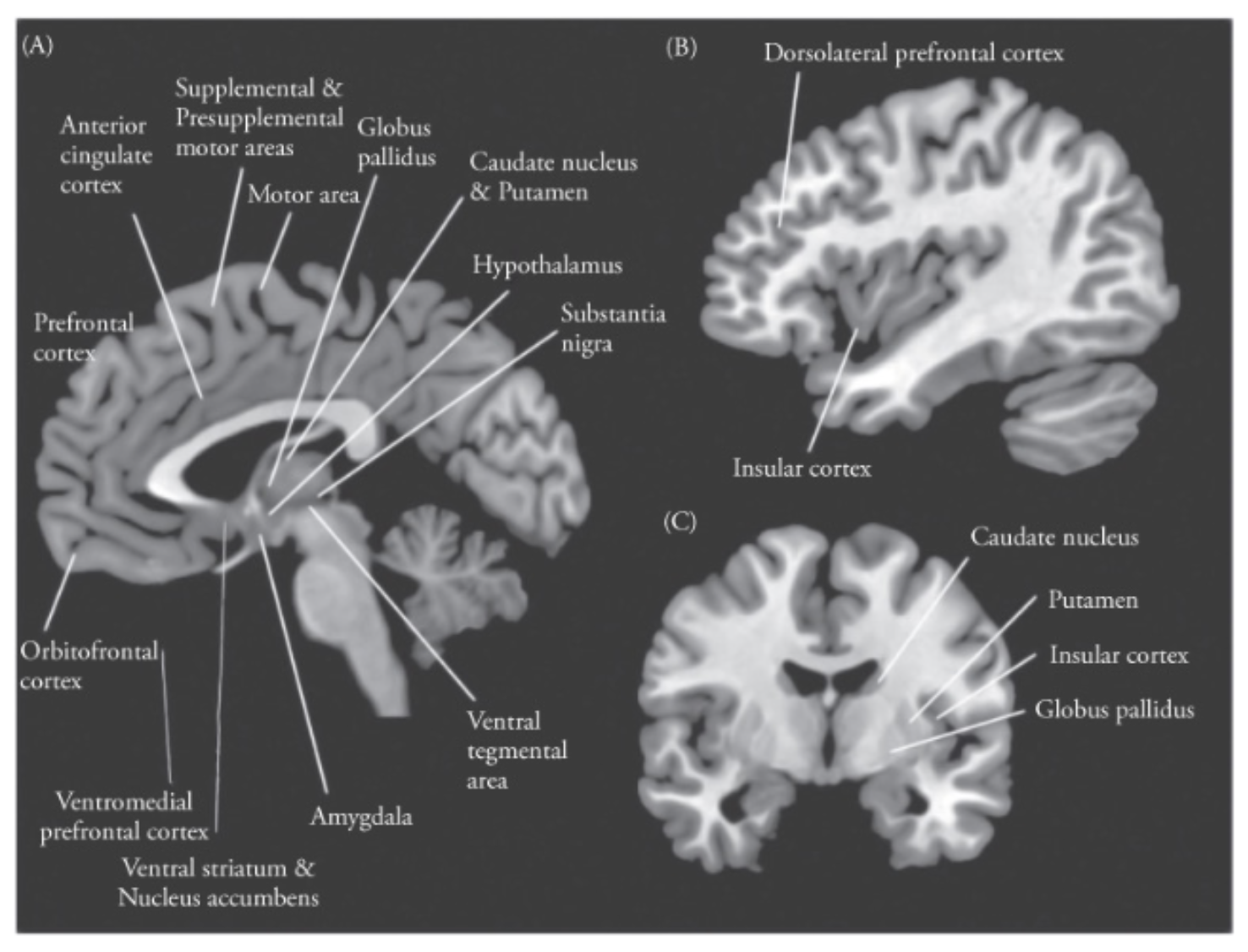
key structures related to motivation
key structures for motivation
prefrontal cortex (dorsolateral, ventromedial, orbitofrontal)
anterior cingulate cortex
striatum (dorsal, ventral)
ventral tegmental area
insula
amygdala
hypothalamus
motor areas
basal nuclei
key structures for motivation
prefrontal cortex
essential for executive control and planning of motivated behavior
dorsolateral prefrontal cortex (dlPFC)
involved in goal representation and attentional control
helps resist temptation in order to meet long-term goals (self-control)
e.g., resisting the urge to eat the cake you are making so that you can give it to your friend for their birthday
stores emotional memories that are used in decision making
e.g., you make this decision ^ by looking back on fond memories of that friendship
ventromedial prefrontal cortex (vmPFC)
helps us assign emotional value to sensory rewards, social cues, and emotional inputs during decision-making
involved in making choices
e.g., while we may like eating cake, we may assign a higher value to the friendship —> don’t eat the cake
plays a role in risk assessment, decision-making, social judgements, and self-control
orbitofrontal cortex (OFC)
stores and processes information about rewards from the environment
involved in developing preferences and choosing between options
inhibits inappropriate actions (involved with delay of gratification)
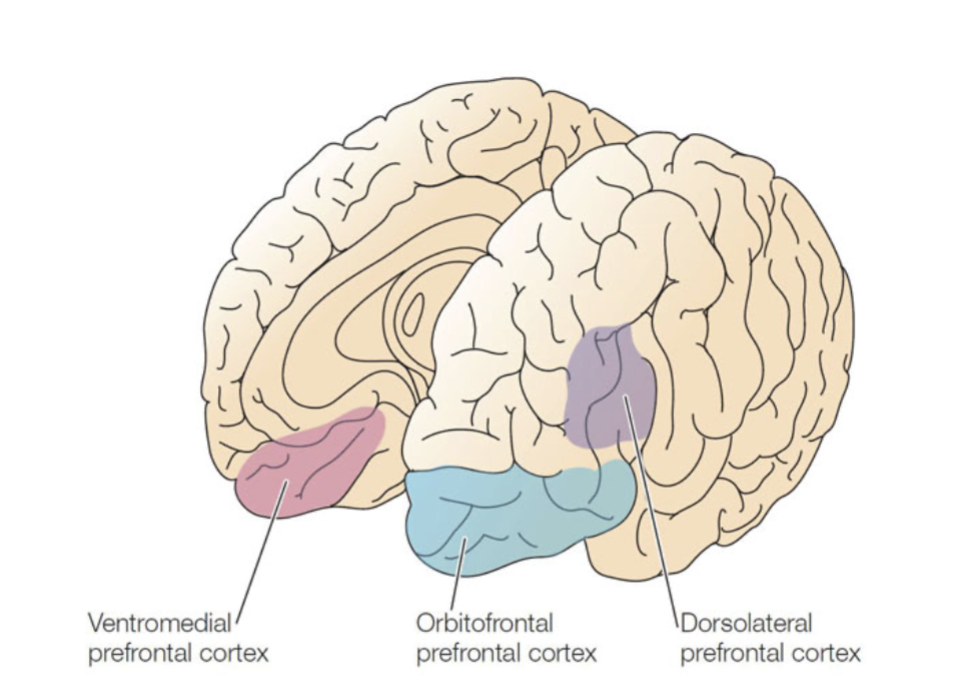
orbitofrontal prefrontal cortex and and ventromedial prefrontal cortex have a similar location, but the ventromedial prefrontal cortex is a bit more medial
key structures for motivation
anterior cingulate cortex (ACC) - part of the limbic lobe
2 regions
dorsal ACC:
associated with cognition
connected with PFC (pre-frontal cortex) and motor areas
ventral ACC:
associated with emotion
connected with the limbic system (amygdala, nucleus accumbens (ventral striatum), hypothalamus, and the anterior insula)
helps calculate cost-benefit analysis (is the effort worth the reward?) and is activated when we detect conflict and/or errors during problem solving and in new situations
helps to prioritize attention, make choices, and predict consequences
uses information from both the cortex AND limbic areas to inform decision making and action selection
key structures for motivation
insula
involved in intuitive feelings
2 regions
posterior insula:
monitors interoceptive information from the viscera (i.e., feelings from your organs/physiological information about how your body is feeling); can send this information to the anterior insula; creates a body-based “feeling state”
e.g., noticing rapid breathing, enticing increased heart rate, noticing sweaty palms
anterior insula:
integrates information from the posterior insula with contextual information (environment, task, people) to make conscious construction/representation of how we feel- emotional judgements
e.g., our gut feelings, like trust, anxiety, empathy
creates a global “feeling state” that guides decision-making
key structures for motivation
amygdala
receives sensory information from the thalamus and sends emotional information to cortical areas
lateralization:
right amygdala: associated with negative emotions (fear, anger, anxiety), detects and responds to aversive events
left amygdala: associated with positive emotions and reward
creates emotional associations with positive or negative stimuli in the environment
key structures for motivation
hypothalamus
regulates biological functions and responds to natural rewards (food)
regulates the endocrine system (pituitary gland) and the ANS
produces visceral responses to + physiological expression of emotions
e.g., racing heart rate, sweaty palms, trembling
—> this information can be used to guide motivations
key structures for motivation
ventral tegmental area (VTA)
midbrain region that produces dopamine (involved in motivation/rewards)
forms the beginning of the mesocorticolimbic pathways
—> sends dopaminergic projections to the prefrontal cortex and structures of the limbic system
dopamine release based on reward anticipation and is greatest when rewards are unexpected
strongly involved in reward pathways, which helps to guide our motivated behaviors
key structures for motivation
motor areas
motor areas of the brain are important for planning and executing motivated behavior
premotor cortex and supplementary motor area: motor planning!
creates a smooth, coordinated action plan to be able to carry out goal-directed actions
primary motor cortex: initiates movement execution
encodes movement parameters (force, direction, distance, speed)
key structures for motivation
basal nuclei
striatal complex
pallidal complex
striatal complex
ventral striatum (nucleus accumbens)
pleasure center of the brain
activated by things we like, want, value, prefer, and enjoy
receives dopaminergic input from the VTA – mesolimbic pathway
sends projections to the ventral pallidum
neostriatum or dorsal striatum (caudate nucleus, putamen)
input zone: pays an important role in selection of behavior based on value of goals
receives dopaminergic input from substantia nigra (pars compacta) – nigrostriatal pathway
pallidal complex
ventral pallidum (substantia innominata)
receives input from the ventral striatum and other reward-related areas
helps translate reward-related motivation signals from the limbic system into motor output
globus pallidus
output zone: energizes or inhibits action plans; informs motor output
== basai nuclei are very important for both motor output and the reward system
key pathways for motivation
mesocorticolimbic pathway
orbitofrontal-striatal circuit
ventromedial prefrontal-amygdala pathway
anterior insula-anterior cingulate cortex circuit
key pathways for motivation
mesocorticolimbic pathway
mesolimbic projections: VTA sends dopaminergic projections —> to the nucleus accumbens, amygdala, hippocampus
this dopamine pathway is involved in appraising the amount of reward a stimulus provides
mesocortical projections: VTA sends dopaminergic projections —> to the PFC (orbitofrontal cortex)
this dopamine pathway helps to brings awareness to stimuli that produced past rewards and promotes goal-directed behaviors to seek out rewarding stimuli
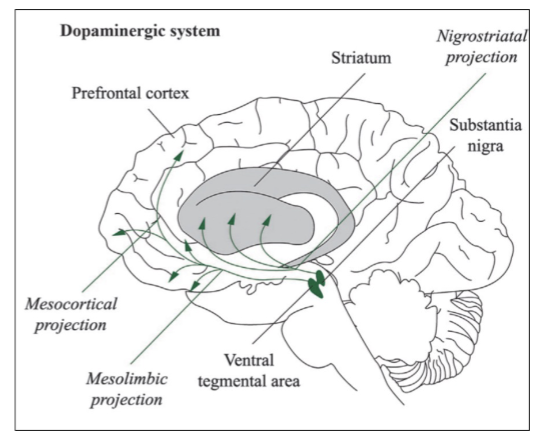
key pathways for motivation
orbitofrontal-striatal circuit
circuit between the PFC (orbitofrontal cortex and dorsolateral PFC) and the ventral striatum (nucleus accumbens)
activation of the nucleus accumbens (associated with the reward system) increases focus on obtaining immediate rewards
the orbitofrontal cortex and dorsolateral PFC help to inhibit this ^ immediate gratification in order to achieve long term goals
helps with choice of large delayed reward over small immediate reward
delayed gratification
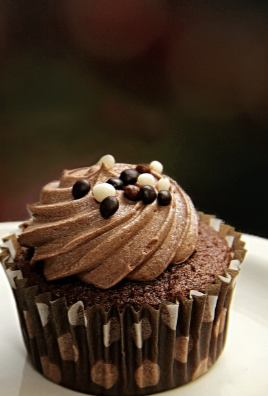
key pathways for motivation
ventromedial prefrontal-amygdala pathway
important for value-based decision-making and reward processing
ventromedial prefrontal cortex (vmPFC) can suppress fear responses from the amygdala when it’s activated
pathway implicated in PTSD, where fear responses from the amygdala become overactivated and the vmPFC does not adequately inhibit these responses
receiving feedback about failure may decrease vmPFC activation; however, making choices based on one’s preferences during a task can help maintain vmPFC activation, even when receiving failure feedback, leading to improved performance
key pathways for motivation
anterior insula-anterior cingulate cortex circuit
awareness of intuitive emotions (from the anterior insula) is used to make decisions about actions based on anticipated consequences (anterior cingulate cortex)
e.g., when you’re looking for a business partner, you’d rather pick someone you perceive as trustworthy than someone you perceive as sketchy
neural basis of key motivations
homeostatic motivational processes
homeostatic motivational processes (hunger, thirst)
involve a connection between the hypothalamus and the mesocorticolimbic pathway (i.e., the reward pathway)
both the orbitofrontal cortex and amygdala respond to rewards associated with fluid intake, activating the striatum (i.e., the dopaminergic reward system)
e.g., the enjoyment you feel when drinking a hot cup of tea on a cold day
neural basis of key motivations
learned motivational states
learned motivational states
incentives, reward
incentives: the amygdala evaluates if stimuli are associated with reward or punishment; memories are stored in the hippocampus, insula, and orbitofrontal cortex
incentive value is conveyed by the mesolimbic system to initiate action (to obtain the incentive!)
rewards: activation of dopaminergic pathways
neural basis of key motivations
person-generated motivational states
person-generated motivational states
volition
self-regulation/ goals
intrinsic vs. extrinsic motivation
psychological needs
autonomous self-regulation
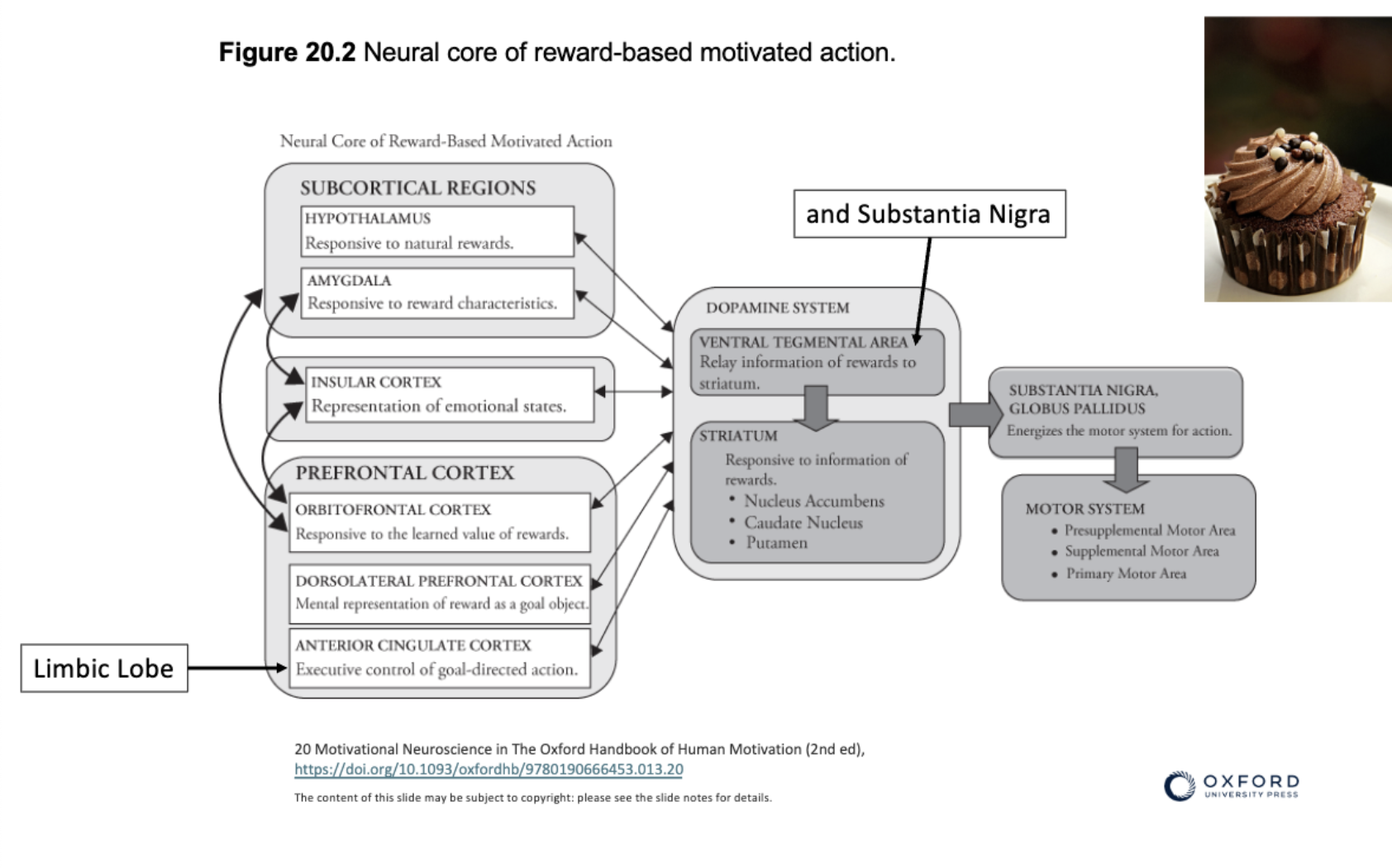
relationships between the structures involved in motivated action
e.g., saw a chocolate cake and wanted to eat it
hypothalamus= indicates I am hungry
insula= communicates the feeling of hunger + positive feelings towards chocolate cake
ventral tegmental area= dopaminergic response is activated
—> communicates to the nucleus accumbens + amygdala (which is associated with rewards)
—> also communicates with the prefrontal cortex, which considers the value of the cupcake + but also may consider the reasons I should not eat the cupcake
e.g., am i on a diet? am i going to eat dinner soon? is it someone else’s cupcake?
anterior cingulate cortex= helps to navigate this conflict ^ to come up with a decision
motor system= is activated when we decide to eat the cupcake, enabling us to pick up and eat the cupcake
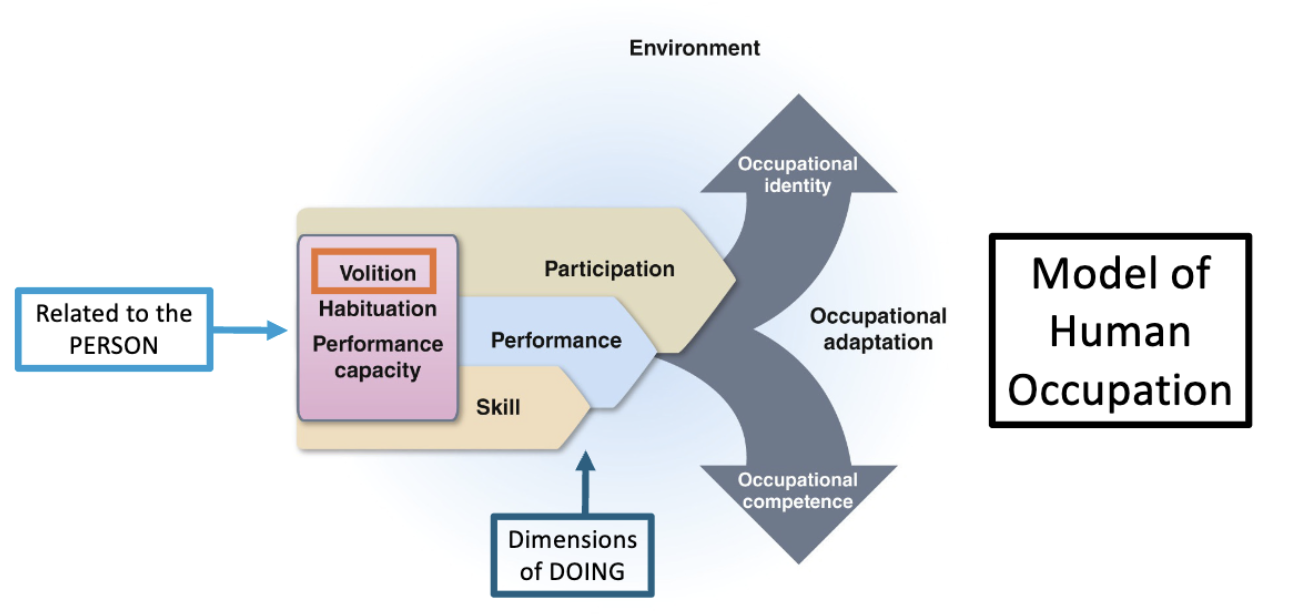
volition is a big part of the Model of Human Occupation and contributes to our ability to engage in meaningful occupations
volition
mental control over action, or an ongoing effort to sustain motivated action
model of human occupation:
making choices and decisions about what to do (choosing occupations)
anticipating options, choosing what to do, doing it, experiencing one's actions, interpreting that experience
the anterior cingulate cortex is involved in exerting mental control and problem solving
premotor and supplementary motor areas are activated in preparation for volitional actions

self-regulation/goals
goal-setting and planning are key for occupational engagement
the prefrontal cortex generates goals and intentions —> and then carries out the plans needed to meet our goals
dorsolateral prefrontal cortex is involved in pursuing long term goals
this area allows us to maintain cognitive control, so that we can stay on task and persist in our goals
anterior cingulate cortex is also involved in monitoring conflict, integrating our emotions, and making decisions about changing course of action
helps us adapt and make adjustments when things don’t go as planned
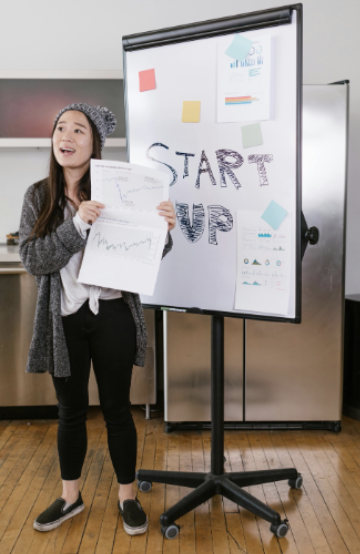
intrinsic vs. extrinsic motivation
intrinsic motivation (interest, enjoyment):
“doing a behavior because the activity itself is interesting and spontaneously satisfying... positive feelings result from the activity itself”
anterior insula is activated by intrinsic rewards; may modulate the formation of rewarding memories through activation of the VTA!
anterior insula is involved in constructing how we feel
this relates to the positive emotions that we feel when we engage in something we enjoy doing
extrinsic motivation (incentive motivation):
engaging in a behavior because it leads to some separate consequence, like gaining a reward or avoiding a punishment
associated with the dopaminergic reward system and the orbitofrontal-striatal circuit
anterior cingulate cortex helps determine if the reward is worth the effort needed to obtain it!
providing extrinsic rewards can decrease intrinsic motivation!
once the external reward is drawn, it is less likely we’d want to continue the activity
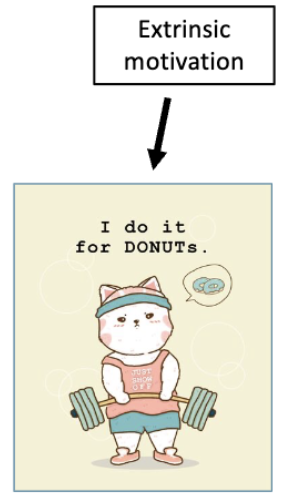
intrinsic motivation
intrinsic motivation increases positive affect, cognitive flexibility, and creativity, which are all supported by the dopamine system
2 types of dopaminergic neurons in VTA and substantial nigra (SN)
value-coding dopaminergic neurons: stimulated by reward and inhibited by punishment (rewards, feedback, learning, success)
stimulated by external rewards, but can also be activated by feedback about our success or failure on a given task; we learn from these experiences, and our future engagement is informed by them
unexpected success —> activated dopamine response
unexpected failure —> inhibited dopamine response
salience-coding dopaminergic neurons: activated by curiosity and interest in the environment or task (related to intrinsic motivation); curiosity has been associated with activation of the left VTA/SN and bilateral striata (including nucleus accumbens, caudate nucleus, putamen)
you must find a good balance of something interesting + challenging- but not too difficult- in order to learn best
intrinsic motivation improves learning outcomes, by stimulating the dopamine system and is involved in self-directed learning

basic psychological needs
self-determination theory assumptions
3 basic psychological needs support intrinsic motivation
anterior insula and the rewards system are involved
self-determination theory assumptions
people are naturally curious and motivated to explore their environments and succeed, which can either be supported or impeded by social environments
3 basic psychological needs support intrinsic motivation
competence: feeling effective in one’s ability to develop mastery in activities that are optimally challenging and that further develop one’s capacities; confidence in abilities and capacity to achieve goals
support perceptions of competence by providing feedback about success + making sure the task is the right level of challenge (where success is possible)
autonomy: exercising choice in one's behavior out of their own volition/will; "an experience of volition and integrity, the sense that one’s behavior is authentic and self-organized, rather than internally conflicted and pressured or externally coerced"
studying because you value the information vs studying to get a good grade, or to avoid embarrassment
relatedness: feeling connected with others and having satisfying social relationships improves intrinsic motivation
anterior insula (relates to how we feel about ourselves within our environment) and the rewards system are both activated when our basic psychological needs are met
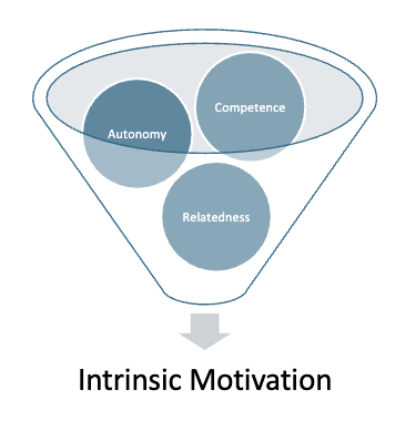
autonomous self-regulation
volitional decision-making (making personal choices) that are based on one’s sense of autonomy activates the ventromedial prefrontal cortex (vmPFC)
can help resolve internal conflicts identified by the anterior cingulate cortex
vmPFC interacts with both the ventral striatum and amygdala during value-based decision making
co-activated with the ventral striatum during rewarding decisions
suppresses fear response from amygdala
having a sense of control can help extinguish fear and anxiety generated by the amygdala
making self-determined choices when engaging in a task can increase resilience when receiving feedback about failure, thereby improving performance
vmPFC activation may reduce stress responses from the brainstem and reduce cortisol levels, increasing active coping
failure is a natural part of learning; making mistakes is essential for growth and improvement! —> achievement of goals
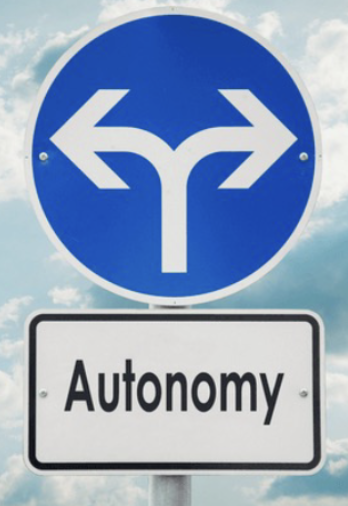
motivation and motor learning
OPTIMAL Theory: “optimizing performance through intrinsic motivation and attention for learning”: i.e., supporting intrinsic motivation can improve motor learning
motor learning influenced by:
autonomy (active participation in determining one’s behavior)
enhanced expectancies for future success (increase in perceived competence)
external focus of attention (concentration on the movement's intended effect)
response of dopamine to the anticipation of positive experience leads to improved performance
expected success leads to further success and aids memory consolidation
dopamine from the VTA promotes neuroplasticity in the primary motor cortex leading to —> new motor learning, formation of new motor memories
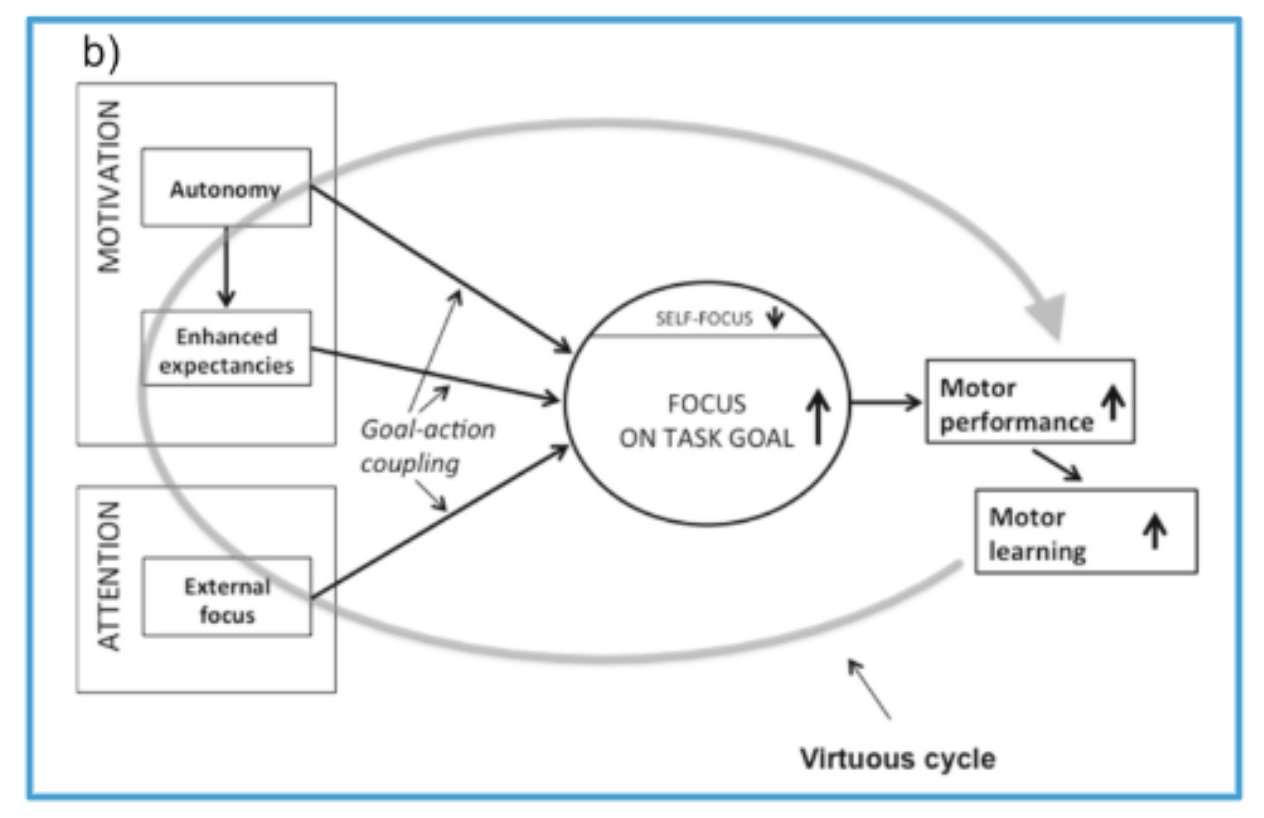
limbic system and the *vagus nerve
the vagus nerve appears to connect to limbic system structures via the solitary nucleus
the solitary nucleus sends direct projections to the amygdala and appears to mediates emotional responses to respiration
amygdala is implicated in stress-related disorders, including PTSD
overactivity in the amygdala can occur after exposure to traumatic stress
—> stress can lead to maladaptive breathing patterns (hyperventilation), which can —> further induce anxiety and panic
decreased vmPFC control over the amygdala, leading to overactive fear responses
hippocampal functioning is also impaired, which may lead to re-experiencing of trauma-related symptoms
vagus nerve stimulation is a treatment for chronic depression and PTSD
electrical stimulation of the vagus nerve appears to alter cortical and subcortical brain regions such as the amygdala and hippocampus (although the mechanisms are unclear)
shown to reduce symptoms of depression and anxiety
may inhibit the sympathetic nervous system, reducing “fight or flight” responses, which may explain the reduction of ^ depression and anxiety symptoms
mind-body interventions are also thought to increase parasympathetic tone
through activation of the vagus nerve, leading to reduced stressslow breathing with long exhalation, yoga, mindfulness-based stress reduction techniques
benefits are associated with connections between the autonomic nervous system and the limbic system (amygdala, hippocampus, PFC)
increased PFC activation is associated with increased parasympathetic activity (which may improve inhibitory control over the amygdala)
however, much is still unknown!
therapeutic breathing techniques and mind-body interventions can help reduce stress and anxiety through connections between the autonomic nervous system (vagus nerve) and the limbic system
*vagus nerve= part of the parasympathetic division of the autonomic nervous system; related to our ability to manage stress and anxiety